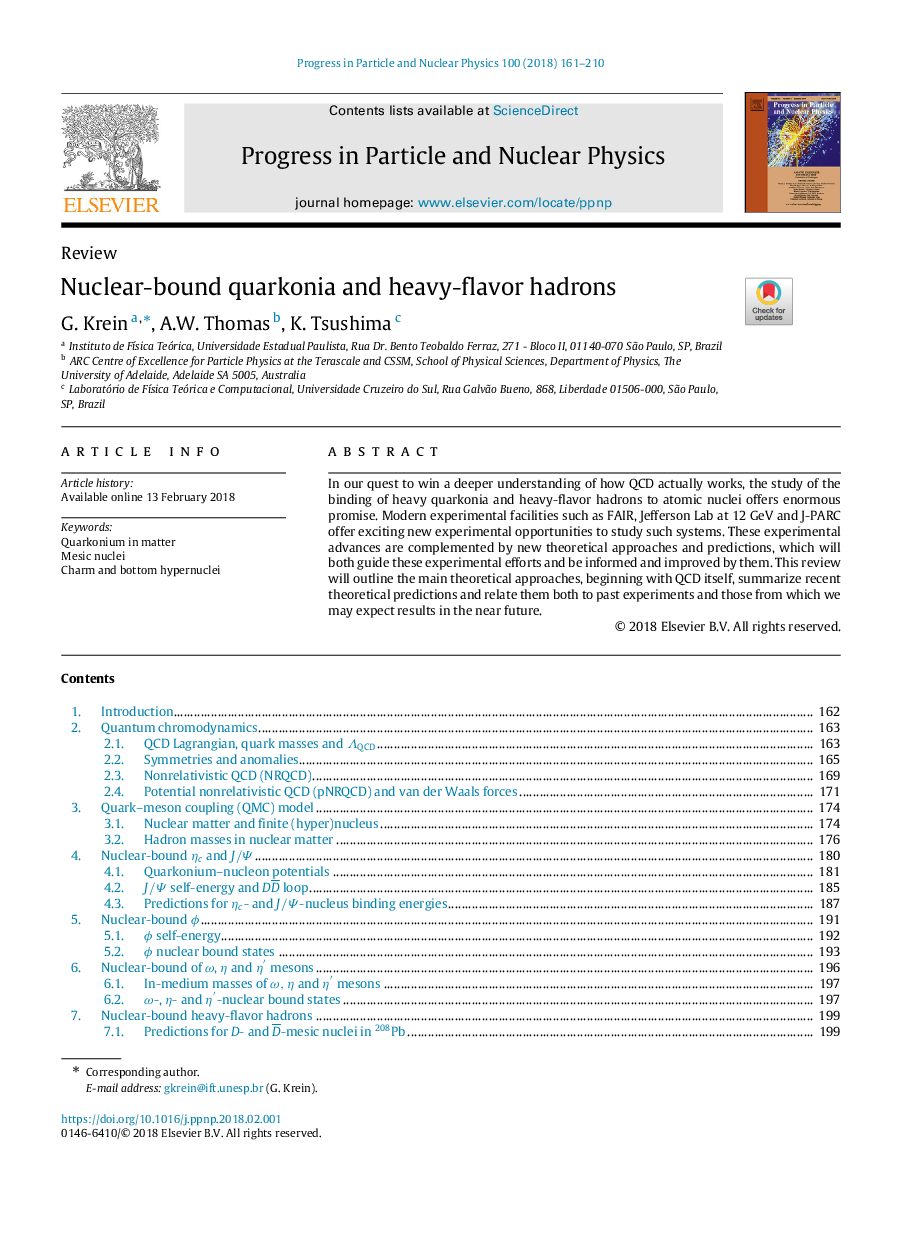| Article ID | Journal | Published Year | Pages | File Type |
|---|---|---|---|---|
| 8200885 | Progress in Particle and Nuclear Physics | 2018 | 50 Pages |
Abstract
In our quest to win a deeper understanding of how QCD actually works, the study of the binding of heavy quarkonia and heavy-flavor hadrons to atomic nuclei offers enormous promise. Modern experimental facilities such as FAIR, Jefferson Lab at 12 GeV and J-PARC offer exciting new experimental opportunities to study such systems. These experimental advances are complemented by new theoretical approaches and predictions, which will both guide these experimental efforts and be informed and improved by them. This review will outline the main theoretical approaches, beginning with QCD itself, summarize recent theoretical predictions and relate them both to past experiments and those from which we may expect results in the near future.
Keywords
Related Topics
Physical Sciences and Engineering
Physics and Astronomy
Nuclear and High Energy Physics
Authors
G. Krein, A.W. Thomas, K. Tsushima,
